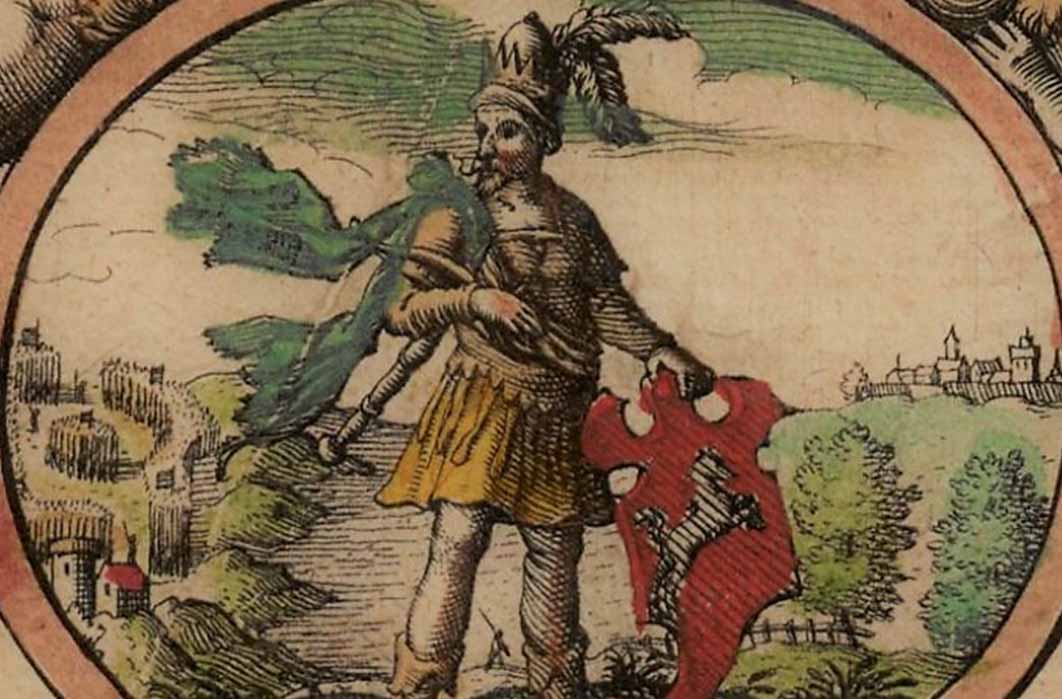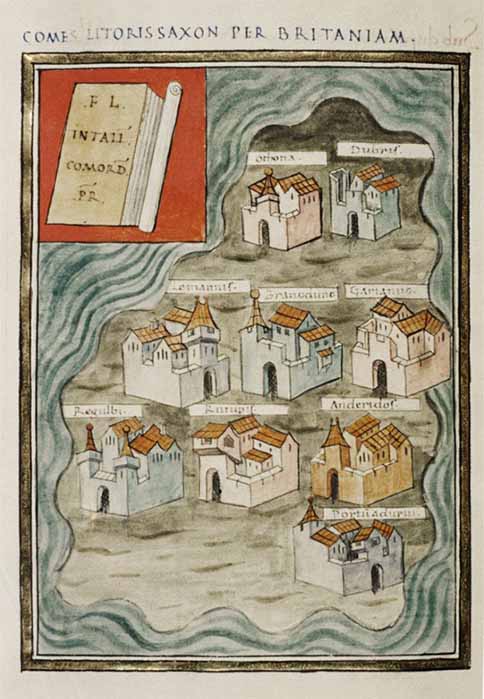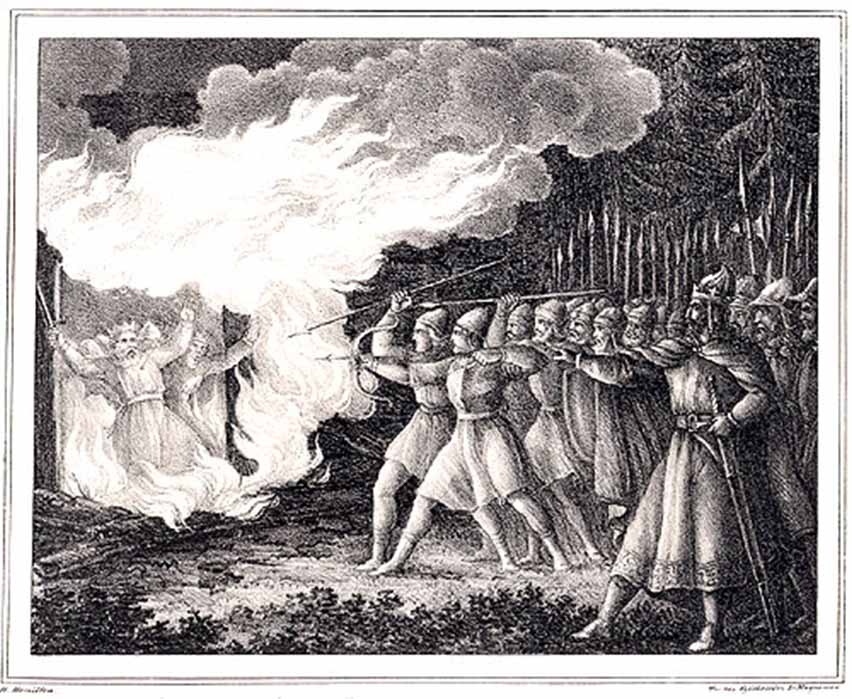
Revolt Of The Angle, Saxon and Jute Mercenaries In Britannia
Three Saxon keels slipped effortlessly through the waves towards the Kentish coast. The white cliffs glided past as the rowers, 20 on each side kept a constant rhythm. The shallow-draft oaken hull, 90 feet long (27 meters), drew just four feet of water. The shores of Britannia were within easy reach of such ships from north-western Europe. Settlers or raiders generally put to sea March to October to make best use of prevailing winds and tides. The people of Britannia had experienced both for decades. The coast towards which the three ships turned their prows had formerly been known as the ‘Saxon Shore Command’ implying the presence of mercenaries, settlers or raiders. Perhaps a combination of all three. But the men in the three keels had not come to settle, nor did they have goods to sell.

The nine British Saxon Shore forts in the Notitia Dignitatum. Bodleian Library, Oxford. (Public Domain)
These were ‘sea-wolves’, ‘wave-riders’, warships, swift and shallow. Each ship could hold up to 50 men. The earliest record of Saxon piracy along the Channel and North Sea coasts occurred in the 280s. By the mid-fourth century contemporary writers were recording serious and continuous raiding. In the fifth century Sidonius Apollinaris, writing in Gaul, described in harrowing terms their predatory nature, how they sacrificed one in ten captured slaves to the waves. But these men were not raiders. Not this time.
The Finn’s Fort Blood Feud
Such men only braved the late-winter sea for good reason. Reason they had. Behind them lay a blood-feud and the burning shell of a King’s hall in Friesland. The Finnsburg Fragment records Hnæf, ‘half-Dane’ and Scylding, had visited his sister and her husband, Finn, King of the Frisians. Treacherously attacked, Hnæf and his 60 “war-bears” held the doors to their guest-hall for five days and nights without loss. Frisian corpses piled up around the doors in their attempts to break through. By the end of the fighting Hnæf lay dead as did his nephew, Finn’s son. A Jute named Hengest took leadership of the remaining men within the great hall. A truce was agreed, oaths exchanged and many of Hnæf’s men were allowed to leave before the winter ice.

Burning enemies alive in a Great Hall, by Hugo Hamilton (Public Domain)
Hengest remained behind, brooding. The new year thaw brought the return of some of his men and Hengest’s mind turned to vengeance. The sword Hildelcoma, “best of swords… renowned among the Jutes” was placed upon his lap. This was enough, a sign he could not ignore. Fire and blood filled the air once more as they attacked. Finn’s widowed queen, Hildeburh, and all the treasure that could be found were carried back to the Danes, leaving her husband’s body in the ashes of their hall. The warrior Hengest’s next alleged appearance places him, with his brother Horsa, at the prow of the leading keel, heading for Britannia.
Who were the Invaders?
A scattering of most late literary sources exists. The earliest and perhaps the most reliable, the Gallic Chronicle of 452 and 511, was written in southern Gaul by an anonymous writer: “The Britains [i.e. the five provinces], which to this time had suffered from various disasters and misfortunes, are reduced to the power of the Saxons”. Yet many parts of Britain held out for centuries leaving one to wonder if the writer, far removed from events, was mistaken, exaggerating or referring to some political event.
The only contemporary sixth century insular source, De Excidio et Conquestu Britanniae /On the Ruin and Conquest of Britain written by the British cleric Gildas, is a sermon rather than history. Gildas tells the Saxons were invited by a council led by a superbo tyranno (Proud Tyrant).




